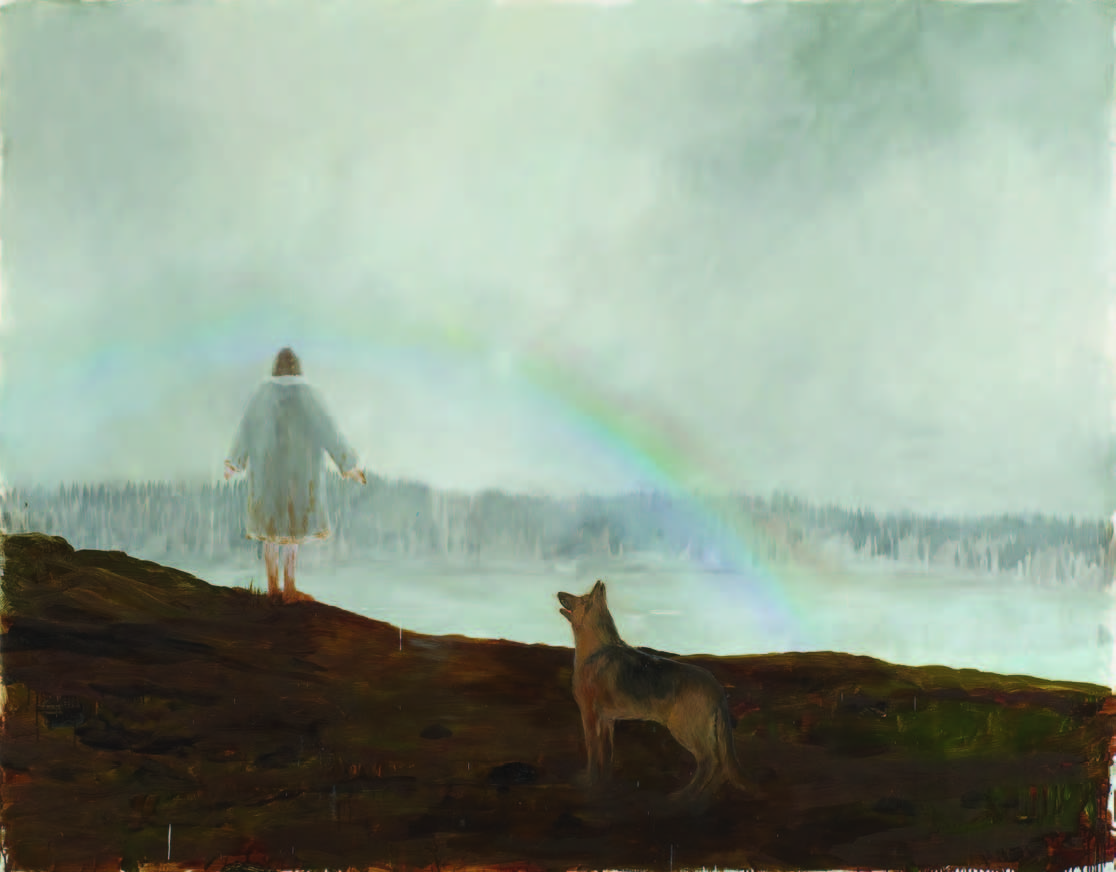New York’s Museum of Biblical Art (MOBIA) is about to do something daring: exhibit art with a less-than-obvious connection to the Bible.

“The Wanderer,” which opens Friday and runs through December 23, features a series of landscapes by Enrique Martínez Celaya, a Miami-based painter who does not profess Christian faith, but is heavily influenced by the Bible-saturated western literary tradition – including Tolstoy, Nietzsche, and Kierkegaard. (Pictured here: “The Ray of Light,” 2008, oil & wax.)
The exhibit’s guest curator is Daniel Siedell, author of God in the Gallery and assistant professor of art history at the University of Nebraska, Omaha.
So, why is a museum of biblical art featuring art that isn’t explicitly biblical? Director Ena Heller, in her foreword to the exhibition catalog, explains that MOBIA hopes to “stretch the definition” of “biblical art” – to challenge “the accepted notion of biblical as narrative or liturgical, as well as anti-modern,” and that Martinez Celaya’s paintings include “indirect quotes” to Scripture as they are influenced by writers who, in turn, were influenced by the Bible.
Siedell, who also directs special projects at Martinez Celaya’s studio, Whale & Star, believes that great art and the Bible are inextricably linked – and that an exhibit such as this one can help Christians discover work that participates in an artistic tradition that takes the Bible seriously, even in an indirect way. “The biblical narratives remain viable as a means to understand the best contemporary art,” he says. “The best art, like the best literature, whether contemporary or traditional, seems to reflect in some way on these narratives, reinvesting them with meaning and significance.”
The paintings are a series of desolate landscapes in which God “may or may not have abandoned mankind,” says the exhibit description. These paintings’ “indirect quotes” could be read as references to biblical stories of exile and expulsion: Adam and Eve made to leave Garden of Eden, Cain sent into exile, the Exodus, Abraham in search of his new home.
Concurrent with the MOBIA exhibit, a series of four large Martinez Celaya paintings will be on view at the Cathedral of St. John the Divine in upper Manhattan. Siedell hopes that visitors to the cathedral will experience the seriousness and “spiritual resonance of art that doesn’t have to make explicit reference to biblical or religious themes.” As he points out, art that claims to be serious – like Martinez Celaya’s work – faces a unique test in a place like St. John the Divine. “It’s one thing in a museum-gallery context [in which viewers often approach art expecting something cynical or ironic], but it’s another thing entirely to present ‘serious art’ in a space that is itself serious.”
The average viewer in these two settings will likely find his or her assumptions about serious art – and biblical art – challenged and expanded. As Heller points out, Martinez Celaya’s paintings “invite contemplation and going beyond the simple glance, beyond composition and subject matter . . . folding back layers of meaning, digging beyond the surface and understanding the process of discovery.”









